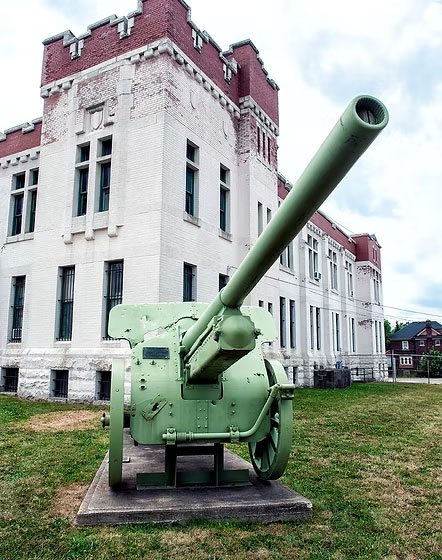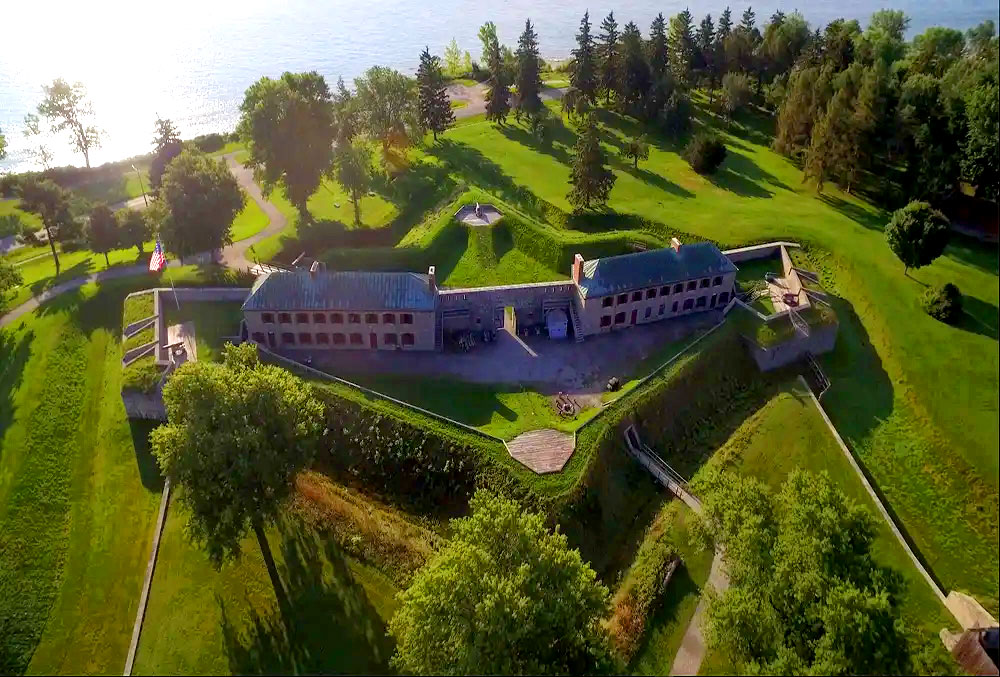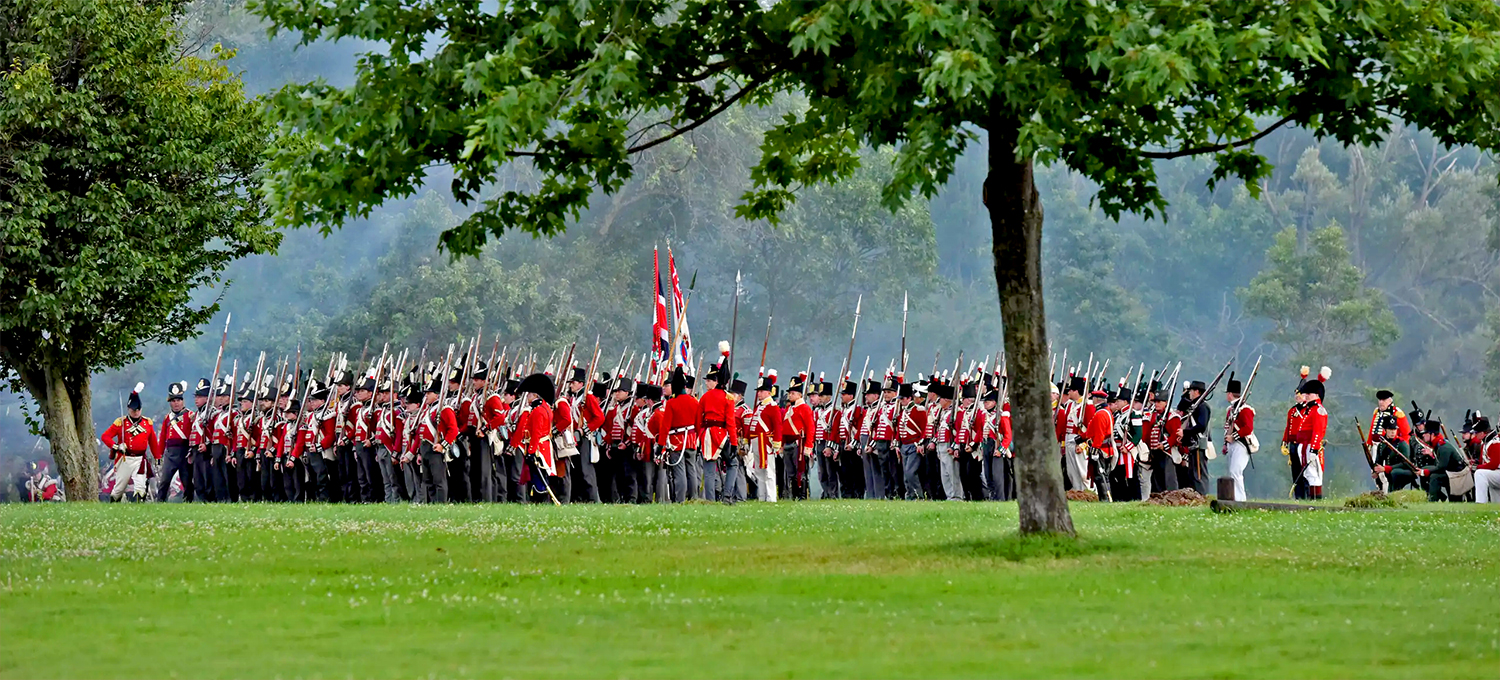In Niagara, memory lingers in the sound of the river, the gardens that border the cliffs, and the wind that rises from the Falls. Beneath its familiar beauty lies a quieter story””one shaped by service, loss, and a long tradition of remembrance. Travelers who look beyond the attractions will find places across the region where history still speaks, inviting pause and reflection.
Queen Victoria Park: The Heart of Ceremony
At the centre of Niagara Falls, Queen Victoria Park offers a living space for remembrance. The park’s Cenotaph, erected in 1927, serves as a steady reminder of those who served in conflicts abroad and at home. Each year on November 11, the community gathers around it for the Remembrance Day service. Veterans stand alongside families and visitors, the sound of the Falls rising in the background like a distant drumbeat.
Outside the ceremony, the park remains a place for quiet thought. Paths lined with flowers and mature trees guide visitors through open lawns where bronze plaques tell the stories of local regiments. Benches face the river, offering calm moments away from the city’s bustle. The landscape carries a rhythm that feels timeless, shaped by both the people who tend it and those it honours.
Oakes Garden Theatre: Stillness and Perspective
A short walk from the park leads to Oakes Garden Theatre, an open-air amphitheatre framed by limestone and greenery at the base of Clifton Hill. Designed in the early 1930s, the garden’s curved terraces overlook the American Falls, creating a balance of structure and nature. Here, the air seems quieter, the movement slower.

In late autumn, when the leaves have turned and most visitors have gone, the space takes on an almost contemplative calm. The arc of the stone walls and the soft fall of water in the background invite reflection. Many stop here without planning to””drawn in by the symmetry, the view, and the quiet sense of reverence the garden carries.
The Niagara Military Museum: Stories That Endure
Away from the waterfront, the Niagara Military Museum keeps the region’s military past alive through personal stories. Located inside the old armoury on Victoria Avenue, the museum is filled with donated keepsakes””uniforms, field gear, letters, and photographs. Each piece connects to someone who lived nearby, someone whose story became part of the wider fabric of Canadian service.

The museum’s guides, many of them veterans, share details that rarely appear in textbooks. Visitors learn about Niagara’s involvement in the War of 1812, both World Wars, and peacekeeping missions that spanned decades. What stays with most guests isn’t the scale of the exhibits but the humanity within them””a sense that the history of war is built from countless small, personal experiences.
Forts and Fields of the Peninsula
Travel north or south from the Falls, and the past comes into view again. Along the river stands Old Fort Erie, where one of the fiercest battles of the War of 1812 took place. Today, the stone ramparts and barracks remain as reminders of that struggle. In summer, the site hosts reenactments that bring those days to life, while the quiet cemetery nearby marks the cost of the conflict.

Farther up the peninsula, Fort George National Historic Site in Niagara-on-the-Lake opens its gates to visitors seeking to understand the daily life of early soldiers. The reconstructed fort sits amid fields that once formed the front line of a young country’s defense. Walking through its wooden halls, one can sense both the discipline and vulnerability that defined life on the frontier.

Illumination of the Falls
Each year on November 11, the Falls themselves take part in the act of remembrance. As night settles, the water turns red in a moving display known as the Remembrance Illumination. From 10 p.m. to midnight, the glow carries across the gorge, reflecting off the mist. Visitors often gather quietly along the railings to watch, letting the colour and sound of the water speak for itself.
Elsewhere in the region, smaller ceremonies and parades unfold throughout the day. Local legions and community halls open their doors, keeping the spirit of remembrance close to home. Whether one attends a service or stands alone by the river, the connection felt during these moments is unmistakable.
Visiting Niagara’s Memorial Sites
Many of Niagara’s war memorials are open year-round. Queen Victoria Park and Oakes Garden Theatre can be visited at any time, while the Niagara Military Museum offers seasonal hours, often extended during November. Old Fort Erie, Fort George & Old Fort Niagara both operate through the fall, with guided programs that explore the region’s strategic role in shaping Canada’s early history.








In Niagara, remembrance lives quietly in the landscape””in the gardens tended with care, the preserved walls of old forts, and the ceaseless rush of the Falls. Each site offers its own way to connect with the past, shaped by respect rather than ceremony alone. For those who visit, these places stand as reminders that the story of courage and sacrifice continues to move, like the river itself, through time and memory.
